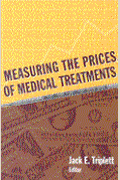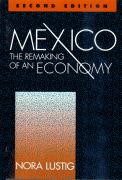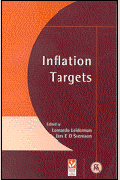Studies in this week’s Hutchins Roundup find that increasing school spending raises local house prices, national borders impact trade within the EU’s single market, and more.
Want to receive the Hutchins Roundup as an email? Sign up here to get it in your inbox every Thursday.
Households value public school spending
How much does local public school spending matter to households? Using data from 1990-2015, Patrick Bayer of Duke, Peter Q. Blair of Harvard, and Kenneth Whaley of University of Houston find that a 1% increase in school spending results in a 0.95% increase in housing prices, indicating that households are willing to pay higher home prices to get access to better-funded schools. Furthermore, they find that spending on school salaries (teachers and staff) is valued far more than non-salary spending. The authors also find that a 1% increase in local tax revenues reduces house prices by 0.20%. Combining both factors, they estimate that a 1% increase in local taxes spent on school salaries would increase house prices by about 1%. “Our analysis points to both the hiring of more teachers and increasing teacher pay as mechanisms for improving the efficiency of the provision of public schooling in the United States,” the authors conclude.
In Europe’s single market, national borders play a big role in market share
The European Union has no formal regulatory barriers to trade between member states. But in practice, find Marta A. Santamaría of the University of Warwick, Jaume Ventura of CREI and Uğur Yeşilbayraktarr of Pompeu Fabra University, country borders still play a significant role in determining the market share of goods. Using Eurostat’s European Road Freight Transport survey, the authors observe about 3 million shipments of goods between 24 European countries and the regions within them. They find that, on average, goods produced in a particular region in one country that are sold in another country capture only 17.5% of the market share that they hold in other regions of their origin country. Among industries, this “border effect” ranges from 12.3% to 38.9%. Factors like transportation cost and consumer preferences for domestic goods, alongside domestic biases in government procurement contracts, contract dispute rulings and conformity assessments by national regulators, the authors suggest, prevent the EU from functioning as a true single market.
As growth in China’s exports slows, where will the goods be made?
Since 2010, as China’s workforce has become smaller and better-educated, and China has focused more on state-owned enterprises, the growth in Chinese manufacturing exports has slowed—leaving room for the global economy to adjust where, and how, labor-intensive goods are produced. Gordon H. Hanson of Harvard suggests three possible outcomes. First, other emerging economies could step in. Countries elsewhere in Asia, Eastern Europe and the Mediterranean, are likely contenders—but Hanson argues that their recent export performance is mixed and unlikely to fill the gap. Second, China could wield its growing research and design sector to develop labor-saving innovations for production, allowing its current labor-intensive exports to become capital-intensive and thus adapt to China’s changing workforce. Yet little innovation has been made in traditional manufacturing—possibly because of the difficulty of automating work with textiles and other soft materials, and because of entrepreneurs’ expectations that labor will continue to be cheap and plentiful. Or, third, China could shift production away from coastal cities towards the less-populated, cheaper interior of the country—but efforts to develop there frequently have been unsuccessful. Hanson concludes that the first and third mechanisms are working slowly, and the second not at all.
Chart of the week: Annual bankruptcy filings for 2020 hit a 35-year low, reflecting federal interventions
Source courtesy of Epiq AACER
Quote of the week:
“It likely will take years to get average inflation up to 2%, which means monetary policy will be accommodative for a long time. This translates into low-for-long policy rates, and indicates that the Fed likely will be continuing our current asset purchase program for a while as well…[I]f we try to fine-tune a very modest inflation overshoot of only a tenth or two, we run a very large risk of failing to achieve our 2% averaging goal within any reasonable amount of time. For me, getting inflation moving up with momentum and delivering rates around 2-1/2% is important for achieving on our inflation objective in as timely a manner as possible,” says Charles Evans, President of the Reserve Bank of Chicago.
“Risk management also argues for accommodative policy. This is because the close proximity of the ELB [effective lower bound] limits the Fed’s capacity to lower short-term policy rates. Instead, if the actual path of inflation turns out to be higher than expected, monetary policy can always react with higher policy rates to dampen inflation. But if we overestimate the underlying strength of the economy, the ELB could impede our ability to provide adequate interest rate accommodation and achieve our dual mandate goals within a reasonable amount of time… Economic agents should be prepared for a period of very low interest rates and an expansion of our balance sheet as we work to achieve both our dual mandate objectives.”












Commentary
Hutchins Roundup: School spending, trade within the EU, and more
January 7, 2021